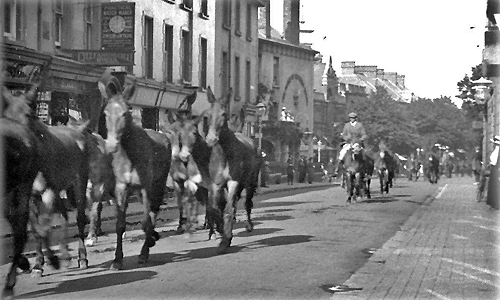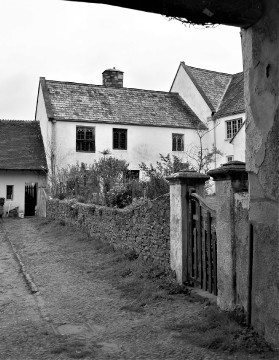
If you had been at Minehead station on 18 December 1914 you would have been in for a surprise. A special train of cattle trucks arrived at the goods sidings, where the doors were quickly opened to release an unruly torrent of animals never before seen in Minehead: semi-wild mules, crossed between horses and donkeys, shipped across the Atlantic from Lathrop, Missouri.
This trainload was the first of many that were to arrive over the next eighteen months. These mules were on their way to serve as pack animals on the Western Front in France and Belgium, and a large depot just outside Minehead had been prepared to allow the animals to recuperate and be prepared for the next stage of their journey.

When hostilities broke out in August 1914, the British army moved quickly to secure pack animals to carry supplies. Motor transport was in its infancy, the army had good experience of mule transport in skirmishes in India and the earlier South African war, and a contract to supply large, strong American mules was quickly concluded. Mules were to be shipped to Avonmouth and depots were set up all over Somerset to receive them, Minehead being one of the largest.
Headquarters for this operation was to be the 364-acre Bratton Court farm, just outside Minehead. Farmer Lovelace and his family were quickly moved to Woodcombe to make room for the newly set-up F Squadron of the Somerset Mule Remount service, commanded by Indian veteran Major George Badcock. Eighty local men were recruited to care for the mules.

During their weeks at Bratton Court, mules had the chance to recover from the rigours of a transatlantic voyage, to be medically checked and shod by a team of local farriers, to feed on lush Somerset grass, supplemented daily by 11kilos (25 pounds) of oats, beans, bran and hay. After several weeks, the sleek and now placid animals were driven back through Minehead’s streets for the next stage of their journey to France.
With trainloads of mules arriving and departing almost weekly, the citizens of Minehead became familiar with mobs of mules moving up to Bratton Court, and strings of more placid animals making the return trip. At any one time there were up to five hundred mules scattered across the green fields surrounding Bratton Court, and the local employees were kept busy. Once at the front, the mules proved their worth, carrying supplies, ammunition and even wounded men. It has been estimated that 75% of the ammunition fired up to 1917 had been carried by mules.

By spring 1916, however, the War Office decided to centralise operations in just two depots, both away from Somerset, and operations were wound up. The employees, who by now were army conscripts, were drafted away, and once again sheep and cattle grazed placidly at Bratton Court farm
The full story of this operation is told in a book – Mules Go To War – on sale at Minehead museum and in the Minehead Tourist Information Centre {£7.50). The book is the result of extensive research by Rita Tremain and Ian Davidson, chronicling for the first time many details of these extraordinary events.
Picture credits;
Mules lined up at Minehead station (Rita Tremain Collection)
Mules were driven through their town on their way to pastures at Bratton (Rita Tremain Collection)
Bratton Court, F Squadron HQ (Geoff Lloyd)
Soldiers with a mule on the Western Front ( © IWM Q33876)
